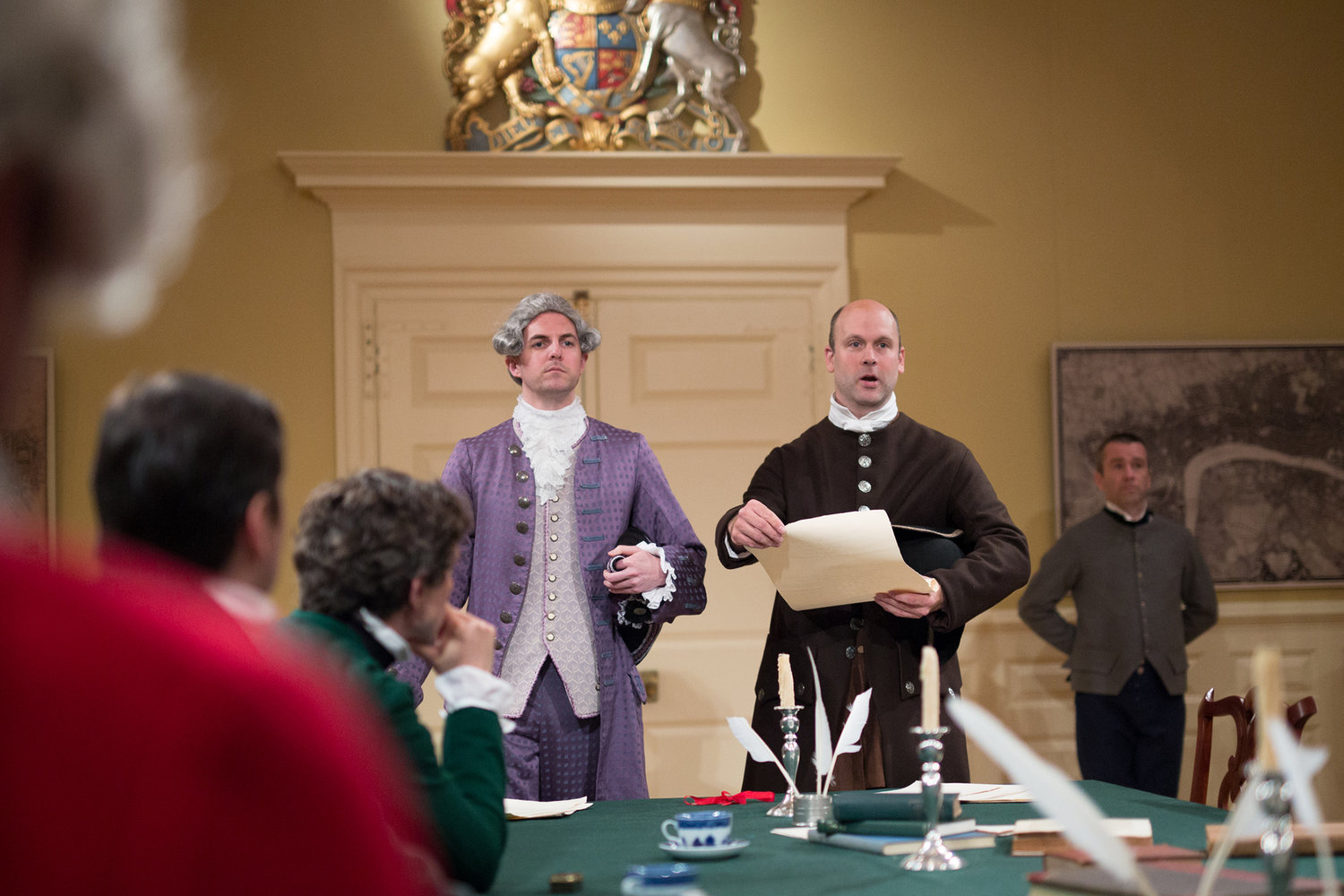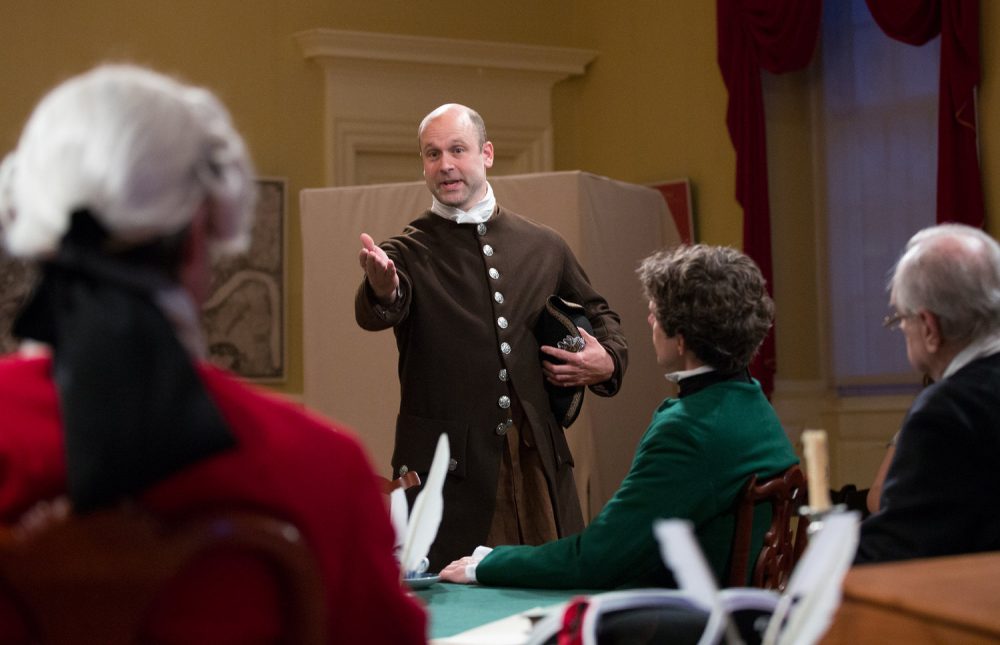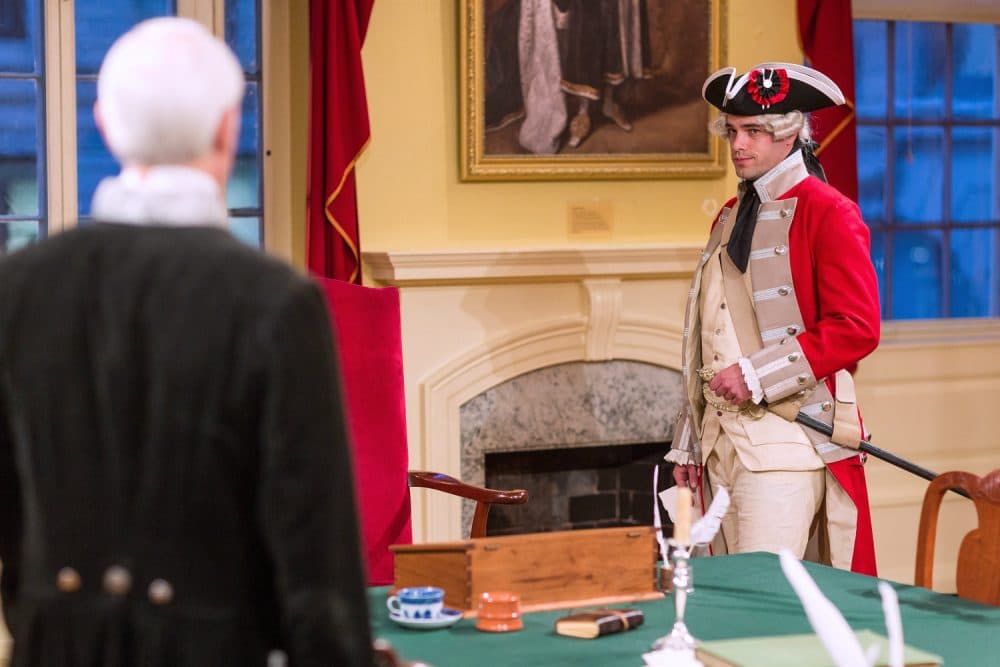Advertisement
Review
'Blood On The Snow' Makes You Believe You're Witnessing Boston Massacre Aftermath

A sense of history is palpably, vitally present during "Blood on the Snow," Patrick Gabridge’s intensely compelling, hour-long dramatization of the council meeting that took place on March 6, 1770 — the day after the events of the Boston Massacre, when British soldiers opened fire on an unruly mob of the city’s residents. Long-simmering popular anger, governmental heavy-handedness, distant and unsympathetic heads of state... The material focuses on events from centuries past, but the concerns and conflicts it delineates feel timely.
As a theatrical experience, the play — commissioned and produced by the Bostonian Society -- is unique, for the production takes place in the very same room that served as the Council Chamber in the Old State House where the deliberations took place.

It’s a simple story, and it takes place around a long table littered with period props (teacups, quills and ink pots), but it’s charged with complex social and political layers. The people of Boston feel oppressed by the presence of British soldiers stationed in the city to enforce taxation and other British laws; they demand that the soldiers be withdrawn. The council members evince varied perspectives, some sympathetic to the demands of the people and some verging on contemptuous. Outside, wild rumors swirl and the growing crowd is primed for further carnage. The rarefied sphere of leadership must attune itself to the mood on the streets, where the blood is still fresh, or worse is sure to come.
The theatrical furnishings are minimal, but effective. Costume designer Laurie Bramhall makes each actor look the part and personalizes his wardrobe with the appropriate amount of glitz, style or sobriety. Sound designer Brendan F. Doyle’s artful work produces the chilling sound of a muttering horde that seems to draw near and then pass by, leaving the room’s occupants shaken. For an hour, the audience is immersed in a thrillingly taut moment of history.
Acting Gov. Thomas Hutchinson (Dale Place), a partician but level-headed monarchist, believes the proper order of things includes a king and loyal subjects. He's reluctant to give ground to the people's demands out of concern for the safety of British commissioners living and working in the city, but he's also willing to listen to arguments in favor of a strategic retreat. Lt. Col. William Dalrymple (Daniel Berger-Jones) is a no-nonsense military man who stands by the right of his troops to defend themselves, but he also recognizes the need for a hasty and well-measured response that will calm the area's colonial residents.

And events are unfolding swiftly. Council member Samuel Dexter (Lewis Wheeler) rushes in with news that men are arming themselves from "as far away as New Hampshire" in angry response to the incident. Only slightly more diplomatic are the overtures of the town meeting, which dispatches a mismatched pair of representatives to speak with the council. The dandyish John Hancock (Matt Ryan) is delicate of speech, but Samuel Adams (Craig Ciampa) is blunt and aggressive in relaying the town meeting’s message: Their patience has finally, dangerously, run out.
Most of the actors who originated the roles in the play’s premiere last year are back, and it’s all the better. Their performances feel more commandingly delivered this time around, and more precisely etched.
That’s all in good service to the finely honed script. Gabridge has crafted character-specific dialogue that rings true for each of the historical figures while at the same time expressing what they have to say in a way that’s friendly to modern ears. (We’re spared the discursive, ornate speaking style of the 1770s.)
With this play’s blend of drama and factuality you come away almost convinced that you were there to see history in the making.
“Blood on the Snow” continues through Aug. 20 at the Old State House in Boston.